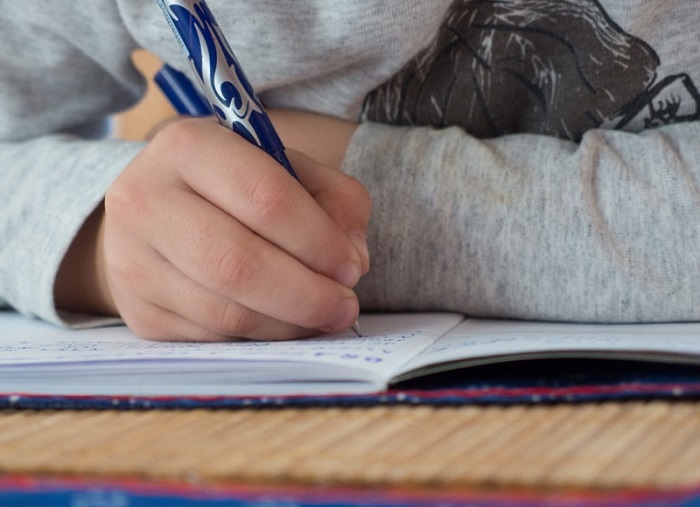
I’ve been teaching creative writing to kids for several years now. Why? After all, kids’ writing is unlikely to get picked up by a “real,” “grown-up” publisher. They won’t be nominated for a “real,” “grown-up” award. And there aren’t too many prizes for children’s writing out there. Many of my colleagues in writing have said things like: “I don’t like to judge children’s writing, it’s pure torture. The quality of the texts is all over the place, but whatever you do, you can’t say what you really think—you feel bad for the kids, you don’t want to hurt their feelings. It’s a tough job!” So why do we need these courses?
I think every child (and every adult) should learn to write stories. Not necessarily to become a writer. First and foremost, writing helps to organize your thoughts. When a child and I discuss what he’d like to write about, he often realizes: there’s so much he wants to say! His fantasy is firing away. Then, when you start jotting things down, there’s not that much after all. Turns out, it’s hard to write out your thoughts. Hard, but interesting. That’s the first thing I teach in my class: that writing is no endless waiting for a muse under an apple tree. Inspiration can strike, then vanish a minute later. Writing is the ability to work with your thoughts. You should have a sense of what you want to write (we often start by drawing our characters or making them from playdough). Then you find words for what you see. Knowing how to find those words is the second important skill.
In today’s class, I had a boy who spent a long time looking for a synonym for “bravery.” When he finally found “fearlessness,” he was thrilled. It was as if he’d stumbled upon a treasure! “Two words for one quality!,” he exclaimed with delight. “It’s like magic!” On my advice, another boy googled “shades of blue” and was equally excited at what he found. “What color is my sea?” He whispered, writing out the words from the online dictionary. “Will it be cornflower blue? Or blue violet?” Of course children learn about synonyms in language arts classes at school. But a lesson in a textbook is one thing, while finding words to describe your own sea is another. A sea for your dream ship to sail on.
The third key skill is the ability to think logically. Let’s say a child’s written a story about a school for unicorns. Then she forgets we’re talking about unicorns. She sends one of the school students out to buy a pair of shoes. “Hold on!” I say. “Let’s think. Are you sure unicorns wear high heels? If they do, they might need more than just one pair!” “Oh, of course, I forgot! No, I don’t want them to get shoes. They need rainbow horseshoes!” A child can write absurd or fantastic texts. But there should be an inner logic. We learn to build that together.
The fourth critical skill, needed for any activity, is the ability to sit down and do our work. Many kids come to me, saying “I’ve come up with a comic, listen, how funny!” “Write it down,” I say. “Oh, I can’t, I don’t have time….” In our days of endless communication I think the ability to sit and write what you’ve thought up is one of the most important.
The fifth skill children learn is how to edit their text. Work out the kinks, correct mistakes. Most importantly, editing not out of fear of a bad grade or a scolding teacher, but because your character is all yours, near and dear to you, worth dressing in the nicest, neatest garments of words. Nothing stained or spotty will do.
Feedback is really important in our classes. A child understands that a text has its reader. You can’t shoot something out and forget about it. You have to find the words that will get across to your reader. You want to reach another and be understood, a skill that matters to far more than just writers.
And finally—what might be first in importance. Creative lessons teach children to seize the inspiration that comes. They interact with a teacher that loves stories, colleagues in arms (pens), who love to create, and catch the thrill that drives all creative work, whether it’s embroidery or music. And that joy of creating together is the main reason I teach creative writing classes for children.
Yulia Kuznetsova
Translated from the Russian by Alisa Cherkasova
Follow us on Facebook.
